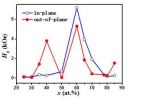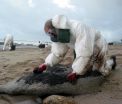(Press-News.org) OAKLAND, Calif., November 22, 2011 – HIV-infected patients are at increased risk for cancer as a result of both their impaired immune system and lifestyle factors, such as smoking, according to researchers at Kaiser Permanente.
The study, which appears in the current issue of Cancer Epidemiology, Biomarkers and Prevention, is among the first to directly compare the risk of cancer in HIV-infected patients with a comparison group without HIV infection, while accounting for major cancer risk factors.
Of the 10 cancer types studied, six were more common in HIV patients, compared with patients without HIV infection — including, Kaposi's sarcoma, non-Hodgkin lymphoma, Hodgkin lymphoma, melanoma, anal cancer and liver cancer, while prostate cancer was less common. Lung and oral-cavity cancers also occurred more frequently in HIV patients, although most of the risk appeared to be due to risk factors such as smoking, according to the investigators.
Further analysis suggested that immunodeficiency — as measured by CD4 count (a measure of the strength of the immune system) — was positively associated with the risk of all studied cancer types, except prostate cancer. The amount of HIV virus in the blood, however, was only associated with two cancers, Kaposi sarcoma and non-Hodgkin lymphoma, they said.
Most cancers found to be associated with immunodeficiency had a known infectious cause, suggesting a mechanism in which an impaired immune system cannot adequately suppress certain cancer-causing viral infections such as human papillomavirus or hepatitis, investigators explained . They also acknowledged that for some cancers, such as lung and oral-cavity cancers, the elevated risk was multifactorial and likely resulted from both an impaired immune system and risk factors such as smoking.
"Taken together, we believe our results support cancer prevention strategies that combine routine prevention activities, such as smoking cessation, with earlier HIV treatment to help maintain a patient's immune system," said study lead author Dr. Michael Silverberg, PhD, MPH, a research scientist with the Kaiser Permanente Division of Research in Oakland, Calif. The main goal of the study, he added, was to determine how much of the increased cancer risk in HIV patients resulted from their disease, and how much was due to risk factors. To accomplish this goal, they performed a cohort study from 1996-2008 of adult HIV-infected and demographically similar HIV-uninfected individuals from Kaiser Permanente Northern and Southern California. The risk for 10 cancer types were compared between groups, while adjusting for cancer risk factors including smoking, alcohol/drug abuse, and overweight/obesity. They also evaluated the effect of CD4 and HIV virus levels, both of which are markers for HIV disease severity.
"After adjusting for risk factors, the incidence rates of six of 10 cancers were markedly elevated in HIV patients. When we looked more closely we discovered that for most cancers studied — eight of 10 — HIV patients with the lowest CD4 had higher rates compared with those without HIV," said Dr. Silverberg. "These findings need confirmation in other settings, particularly colorectal cancer, which has not been previously linked to immunodeficiency."
###
Additional researchers on the study include: Chun Chao, PhD and Lanfang Xu, MS, with Kaiser Permanente Department of Research & Evaluation in Pasadena, Calif.; Wendy A. Leyden, MPH, Charles Quesenberry, Jr., PhD, and Romain S. Neugebauer, PhD, with Kaiser Permanente Northern California Division of Research; Michael Horberg, MD, with the Mid-Atlantic Permanente Research Institute; William J. Towner, MD, with Kaiser Permanente Los Angeles Medical Center; Daniel Klein, MD, with Kaiser Permanente Hayward Medical Center; Robert Dubrow, MD, PhD, with the Yale School of Public Health; and Donald I. Abrams, MD, with the University of California at San Francisco.
Funding was provided by grants from the National Institutes of Health, the Garfield Memorial Research Fund and Pfizer Pharmaceuticals.
About the Kaiser Permanente Division of Research (http://www.dor.kaiser.org/)
The Kaiser Permanente Division of Research conducts, publishes and disseminates epidemiologic and health services research to improve the health and medical care of Kaiser Permanente members and the society at large. It seeks to understand the determinants of illness and well-being and to improve the quality and cost-effectiveness of health care. Currently, DOR's 400-plus staff is working on more than 250 epidemiological and health services research projects.
About the Kaiser Permanente Department of Research & Evaluation (http://www.kp-scalresearch.org)
The mission of the Department of Research & Evaluation is to initiate and conduct high-quality, public-sector health services, epidemiologic, behavioral and clinical research that has a demonstrable positive impact on the health and well-being of Kaiser Permanente Southern California members and the general population.
About Kaiser Permanente
Kaiser Permanente is committed to helping shape the future of health care. We are recognized as one of America's leading health care providers and not-for-profit health plans. Founded in 1945, our mission is to provide high-quality, affordable health care services and to improve the health of our members and the communities we serve. We serve approximately 8.9 million members in nine states and the District of Columbia. Care for members and patients is focused on their total health and guided by their personal physicians, specialists and team of caregivers. Our expert and caring medical teams are empowered and supported by industry-leading technology advances and tools for health promotion, disease prevention, state-of-the art care delivery and world-class chronic disease management. Kaiser Permanente is dedicated to care innovations, clinical research, health education and the support of community health. For more information, go to: www.kp.org/newscenter.
END
A new study from researchers at the Harvard School of Public Health (HSPH) has found that a group of volunteers who consumed a serving of canned soup each day for five days had a more than 1,000% increase in urinary bisphenol A (BPA) concentrations compared with when the same individuals consumed fresh soup daily for five days. The study is one of the first to quantify BPA levels in humans after ingestion of canned foods.
The findings were published online November 22, 2011, in the Journal of the Medical Association (JAMA) and will appear in the November 23/30 print issue.
"Previous ...
(Boston) – Researchers at Boston University School of Medicine (BUSM) have, for the first time, identified an intracellular signaling enzyme that regulates the wake-sleep cycle, which could help lead to the development of more effective sleep aid medications. Subimal Datta, PhD, director and principle investigator at the Laboratory of Sleep and Cognitive Neuroscience at BUSM, led the study, which points to a specific enzyme inside neurons in the brain that trigger an important shift in consciousness from sleep to wakefulness and wakefulness to sleep.
The results will ...
Madison, Wis. — Images of prisoners' brains show important differences between those who are diagnosed as psychopaths and those who aren't, according to a new study led by University of Wisconsin-Madison researchers.
The results could help explain the callous and impulsive anti-social behavior exhibited by some psychopaths.
The study showed that psychopaths have reduced connections between the ventromedial prefrontal cortex (vmPFC), the part of the brain responsible for sentiments such as empathy and guilt, and the amygdala, which mediates fear and anxiety. Two types ...
Hamilton, ON (Nov. 22, 2011) – For years doctors have warned that too much salt is bad for your heart. Now a new McMaster University study suggests that both high and low levels of salt intake may put people with heart disease or diabetes at increased risk of cardiovascular complications.
The study, published in the Journal of the American Medical Association (JAMA) today, found that moderate salt intake was associated with the lowest risk of cardiovascular events, while a higher intake of sodium was associated with an increased risk of stroke, heart attack and other ...
CAMBRIDGE, Mass. – The U.S. government could save the economy hundreds of billions of dollars per year by 2050 by spending a few billion dollars more a year to spur innovations in energy technology, according to a new report by researchers at the Harvard Kennedy School.
Achieving major cuts in carbon emissions in the process will also require policies that put a substantial price on carbon or set clean energy standards, the researchers find.
The report is the result of a three-year project to develop a set of actionable recommendations to achieve "a revolution in energy ...
DALLAS -- A research team led by UT Southwestern Medical Center scientists has identified an atypical metabolic pathway unique to some tumors, possibly providing a future target for drugs that could reduce or halt the spread of cancer.
Dr. Ralph DeBerardinis, senior author of the study published Nov. 20 in Nature, likened the newly discovered pathway to traffic that is rerouted during a highway construction project.
"If we hone in on this reverse pathway, then we may be able to prevent the growth of certain types of cancer," said Dr. DeBerardinis, assistant professor ...
The structural mechanism of typical mortise–tenon joints of southern Chinese traditional timber frame buildings was investigated. The investigation provides a scientific basis for the repair of these ancient buildings. The research was published in SCIENCE CHINA Technological Sciences.2011, Vol 54(7).
The timber members of Chinese traditional timber buildings are connected with mortise–tenon joints, which are the core technology of Chinese and East Asian traditional timber buildings. Scientific knowledge of mortise–tenon joints is the key to understanding the structural ...
A magnetic force microscope (MFM) can determine the distribution of stray fields at a level of tens of nanometers near the surface of magnetic films, and therefore is an effective tool for observing the domain structures in magnetic grains of submicrometer size. At present, the coercivity of normal MFM cantilevers is about 0.3 kOe. Being affected by the magnetism of the measured material, the stability of these cantilevers is unsatisfactory. By applying a FePt layer, the coercivity can reach ~10 kOe. However, the accompanying high-temperature (over 750°C) annealing spoils ...
MyDish, the UK based recipe community site, has been witnessing this trend firsthand and is all for this UK resurgence. After all, Thanksgiving is not just about the first American pilgrims, historically, it marked the end of the year's harvest and was a celebration of thanks for the year's crops.
People across the UK have cottoned on to this fact and more and more are deciding to give 'thanks' too. Whether it is an indication of Britain becoming further Americanised or the UK exercising their right to get their hands on their favourite roast chicken recipes it is not ...
The results of a recent study by the University of Santiago de Compostela on Kentish Plover eggs has shown that there was a unexpected increase in hydrocarbon levels along the coast of Galicia five years after the Prestige oil spill. Worsened in previous years by works to remove the wreck, pollution levels began to rise again in the summer of 2006 along with numerous forest fires.
On 19th November 2002 the oil tanker Prestige sank off the coast of Galicia and spilled 63,000 tonnes of fuel oil into the sea, which reached coasts from the north of Portugal to France. The ...

